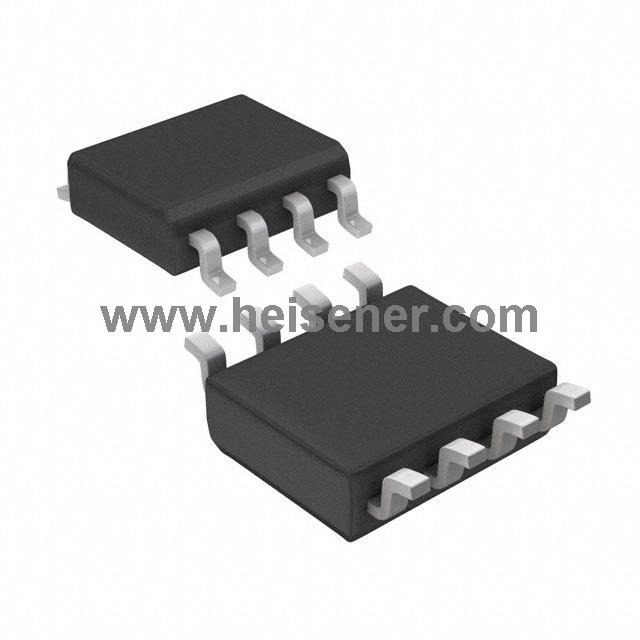 0
0








 0
0









L9637D Introduction
The L9637D is a monolithic integrated circuit, supporting the ISO 9141 standard for efficient communication between vehicles and diagnostic tools. This IC enables bidirectional communication, allowing it to read and transmit data such as diagnostic trouble codes (DTCs) and sensor information. Its design includes features like voltage regulation and low power consumption, making it ideal for applications in onboard diagnostics (OBD-II) systems, automotive service equipment, and telematics systems.
L9637D Pinout

RX: Output for K as input
LO: Output L comparator
VCC: Stabilized voltage supply
TX: Input for K as output
GND: Common GND
K: Bidirectional I/O
VS: Supply voltage
LI: Input L comparator
L9637D Symbol

L9637D Footprint

L9637D 3D Model

L9637D Block Diagram

L9637D Specification
| Parameter | Specification |
| Type | Dual H-Bridge Driver |
| Supply Voltage (Vcc) | 4.5 V ~ 36 V |
| Output Current (Iout) | 1.5 A (per channel) |
| Logic Input Voltage (Vih) | 2.5 V ~ 5.5 V |
| PWM Frequency | Up to 20 kHz |
| Thermal Protection | Yes |
| Operating Temperature Range | -40°C ~ 150°C |
| Package Type | 8-SOIC |
| Channel Configuration | 2 channels (independent) |
| Status Feedback | Yes (diagnostic feedback) |
| Protection Features | Overcurrent, Overtemperature |
| Output Voltage Range | Nearly equal to Vcc |
L9637D Features
- Operating power supply voltage range 4.5 V ≤ VS ≤ 36 V (40 V for transients)
- Reverse supply (battery) protected down to VS ≥ -24 V
- Standby mode with very low current consumption ISSB ≤ 1 mA @ VCC ≤ 0.5 V
- Low quiescent current in off condition ISOFF = 120 µA
- TTL compatible TX input
- Bidirectional K-I/O pin with supply voltage dependent input threshold
- Overtemperature shut down function Selective to K-I/O pin
- Wide input and output voltage range -24 V ≤ VK ≤ VS
- K output current limitation, typ. IK = 60 mA
- Defined OFF output status in undervoltage condition and VS or GND interruption
- Controlled output slope for low EMI
- High input impedance for open VS or GND connection
- Defined output ON status of LO or RX for open LI or K inputs
- Defined K output OFF for TX input open
- Integrated pull up resistors for TX, RX and LO
- EMI robustness optimized
L9637D Applications
Motor Control
Valve and Solenoid Control
Heater Control
Robotics
Factory Automation
Home Automation Devices
Printers and Scanners
Vending Machines
Battery-Powered Devices
L9637D Package Information
The L9637D comes in an 8-SOIC package. This package features 8 pins, making it suitable for compact circuit designs. The typical dimensions of the SOIC package are 3.9 mm × 5.0 mm, providing excellent thermal performance. The 8-SOIC package supports Surface Mount Device (SMD) technology, facilitating automated assembly and enhancing production efficiency.

How to Use L9637D?
First, integrate the L9637D into your circuit design by determining its position on the circuit board and connecting the necessary power, ground, and signal input/output pins. Next, connect the power pin of the L9637D to a stable power source, typically 5V. At the same time, connect the ground pin to the system ground.
Then, connect the input signals to the input pins of the L9637D. These input signals are generally communication signals from the vehicle’s ECU or other control units. After that, connect the output pins of the L9637D to a receiving device, such as a microcontroller or vehicle diagnostic system. Finally, you can perform a test to check the voltage levels and signal transmission on each pin.
FAQs
What is the L9637D?
The L9637D is a monolithic integrated circuit designed for automotive applications, featuring an ISO 9141 compatible interface.
How many pins does the L9637D have, and what type of package is it in?
The L9637D comes in an 8-SOIC package, featuring eight pins for various connections.
How can I troubleshoot issues with the L9637D?
If you experience issues, check the power supply, ensure proper connections to the input and output pins, and verify the signal integrity. Using an oscilloscope can help diagnose communication problems.